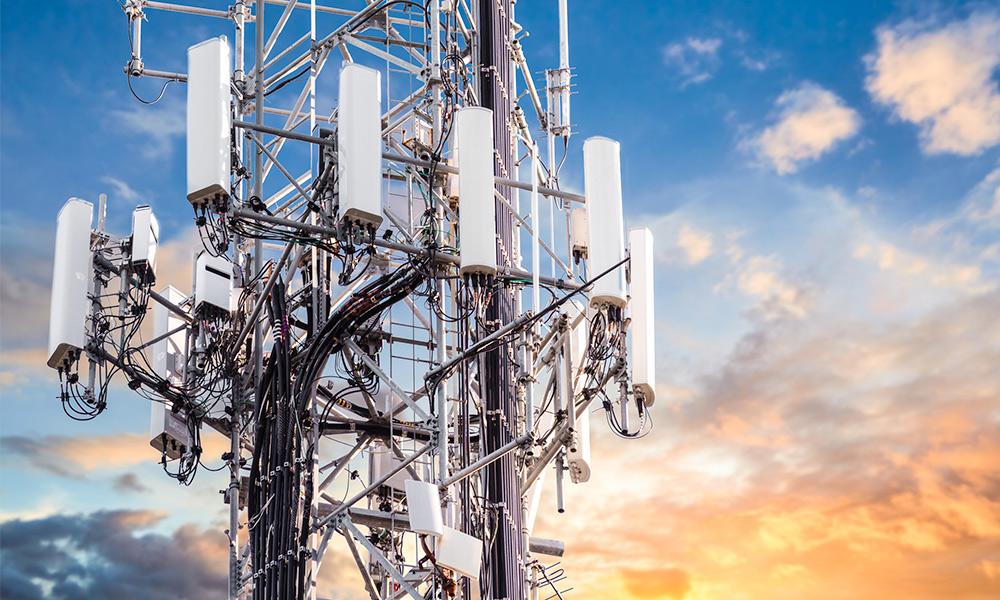UC3M coordinates a European scientific project to advance 6G multi-antenna technologies
5/15/24
The Universidad Carlos III de Madrid (UC3M) is coordinating MiFuture, a research network funded by the European Union (EU) involving some of the leading companies in the telecommunications field (such as Ericsson, Nokia and Vodafone), along with several leading universities in mobile communications research, with the aim of making progress in the field of multi-antenna technologies that will be used in 6G communications. The scientific challenge is to achieve networks with lower latency and higher data transmission speeds, which will enable innovative applications such as telesurgery, holographic virtual meetings or the use of digital twins, for example. To do so, fifteen contracts and an ambitious training programme will be funded for the candidates to complete the doctoral studies and to generate highly qualified researchers in this field with innovative skills.

The MiFuture project is investigating how to evolve MIMO (multiple input multiple output - multiple transmit and receive antenna systems) technology, a technique that has provided unprecedented spectral efficiency in today's 5G communications. Now, the challenge is to develop ultra-massive MIMO (UmMIMO) that will become a key ingredient for the launch of the next generation of mobile communications (6G), over a time horizon spanning the next ten years. “MiFuture will pave the way towards the implementation of heterogeneous cell-free networks with an ultra-massive number of antennas to meet the performance, energy efficiency, positioning accuracy and complexity requirements demanded by the evolution of mobile communications towards 6G”, explains project coordinator Ana García Armada, a professor in UC3M's Signal Theory and Communications Department.
Progress within the framework of this project involves the development of huge antenna surfaces that will greatly improve the current resources in this field. “We want to address what we consider to be the most important challenges in mobile communications for our society in the next ten years. Specifically, communications with very low latency (the delay that occurs due to the lag between the transmission and reception of information packets, due to propagation and processing, among other things), with very high data rates and with reduced energy costs”, says Ana García Armada. “To address these challenges, it is necessary to work on a series of innovative architecture and technologies, such as Open RAN (a non-proprietary version of the Radio Access Network (RAN), which allows interoperability between equipment from different manufacturers) or to have native AI throughout the network design”, she adds.
Possible applications
The project's research team is going to work on several practical scenarios to test what could be achieved with these advances, such as the possibility of having digital twins and full interaction between the real and virtual world, making augmented and virtual reality video calls or holographic images of those present, or even being able to carry out remote tele-surgeries. “We could have an expert in Madrid operating on a person who is in a remote village in the province of Ávila, more than a hundred kilometres away”, says Ana García Armada.
The project has already started the recruitment process for 15 new PhD students to develop their doctoral thesis, which will be open until this June through this website. “The first part of the thesis will be developed in one of the universities that are part of the consortium, where the most academic and educational aspects will be discussed. And the other half of the thesis will be carried out in one of the participating companies in the telecommunications sector, in order to have a practical vision and bring what has been learned to the market”, explains the MiFuture project manager, Eduardo Alonso Frech, from UC3M's Signal Theory and Communications Department. Ultimately, it is about bringing together universities and industry to achieve a research approach, but also a focus on innovation and knowledge transfer.
MiFuture (ultra-massive MIMO for future cell-free heterogeneous networks) is a project that has received funding from the EU Research and Innovation Framework Programme, Horizon Europe, under the Marie Sklodowska-Curie Innovative Training Networks call (GA 101119643). UC3M is coordinating this consortium, which involves research staff from seven countries from the following research centres and companies: the Instituto de Telecommunicaçoes (Portugal), the University of Tampere (Finland), the University of Lund (Sweden), the University Autonoma de Barcelona (Spain), Ericsson Research (in Finland and Sweden), Vodafone (Spain), Nokia (Poland), Nokia Bell Labs (Finland), Altys Technology (France) and Keysight Technologies Belgium. In addition, associate partners include Keysight Technologies UK, the Catholic University of Leuven (Belgium), the NOVA University of Lisbon (Portugal), the University of Aveiro (Portugal) and the University of Coimbra (Portugal).
More information:
MiFuture project website
https://mifuture.tsc.uc3m.es/index.html

